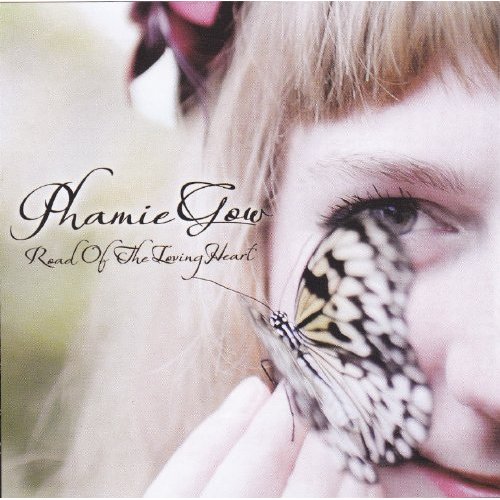Location, location, location. It’s key to many for finding the right place to write and record, but for Phamie Gow and her latest album, Road Of The Loving Heart, it seems of prime importance. Reading through the liner notes you find out that numerous tracks on the album were inspired by places she has visited: “White Horse” is an ode to the landmark of the same name in Wiltshire, England, “Regresso A Chile” is written from the memory of passing over the Andes while en route to Santiago while unsurprisingly “London” is written for the capital city and its “beauty and peace” as seen at night. To Gow the world seems to be a constant source of inspiration. Even the “Emanaprod” studio in a village outside of Montpellier gave off a “welcoming energy.”
And from these places Gow writes what feels like her own hand-drawn postcards. “London” feels like a tour through the city by car as you catch the reflections of lights on the car window or off the water in the Thames while “Regresso A Chile” captures both the serene beauty of the mountains that inspired it and the awe that they invoke as you gaze at them from above.
But there’s only so much you can get onto a postcard. As lovely as these tracks and others on the album are, they lack a certain touch that makes them hit hard. It’s all very well saying “there was a lovely chapel” or “the river was beautiful” but the notes played lack a personal reflection that let us know how Gow really felt about these places, and how they got into her heart and mind to make her create the songs. I don’t want to use the word “hollow” but there’s something almost one-dimensional about the songs at times in the way they don’t ever really give us an idea of how Gow feels – both about the places she’s been or in general. The only time she directly and obviously puts her focus away from locations and landmarks is on “Au Revoir Elsa” – a song written in memory of a friend who died of cancer. But even a track with a back story like that lacks punch and even comes off slightly contrived (forgive me but I can’t help but hear the riff to Joan Osborne’s “One Of Us”).
Perhaps it’s a case of her trying to put too big an idea down into one song. Thus it seems to help when Gow focuses herself onto something particular. Lead single and obvious album highlight “Carousel” is a prime example, as she weaves intricate melodies and complex time signatures all while keeping the motion steady much like the object of inspiration. Others who I’ve let listen to the song bring up comparisons to Ludovico Einaudi and the traits of the Italian composer are there, but I personally can’t help hearing a track which seems to echo the likes of Yann Tiersen with the way rhythm bobs back and forth.
It’s not just the fact that “Carousel” is so focused that makes it so notable – it’s also Gow exploring an idea in a near magical fashion. The way she almost plays with fragments of melodies suggests playfulness as much as it does sincerity. But claiming first prize for exploration of an idea is the three piece “Nocturnal Butterfly” suite at the end of the album. It takes a few listens but soon enough the way she seems to explore the tiny bones in the skeleton of the song comes clear, and makes listening to it as a whole a more rewarding experience. It’s the transformation it makes too, which isn’t surprising considering the track titles. “Larva” begins delicately on a few shimmering high notes before forming into “Chrysalis,” a track with a kind of joy that restrains itself without sacrificing its uplifting spirit, like the butterfly waiting to come out into the world. But it’s when the final piece “Love Dance” comes into the picture that things really get exciting. It surprisingly tumbles into some feverish staccato chords before a melody emerges once again and that joy that was holding itself back in the previous comes out in full flow before fading to a close.
These last three tracks are a journey in themselves and are rewarding when you invest proper attention in them but it’s the last part “Love Dance” that really takes the prize due to the way it can literally and unexpectedly snag your attention right back to the music at the last moment. But the sad thing is that your attention will likely fade as the album plays due to the album’s best content being at the start and finish. As said earlier, the majority of the tracks in the middle of the album lack a certain hook which makes them stick in your mind; too often they feel like a single idea explored no further than going up an octave or two on the keyboard. Nonetheless, throughout the album Gow’s ability on the piano is flawless and beautiful, and when the idea or melody has that special charm like on “Peace Song” it can draw you in and give you reason to return. It’s just a shame that too often I feel like skipping the content between the bookending tracks. I guess sometimes the important thing isn’t the journey but instead where you came from and where you end up.

